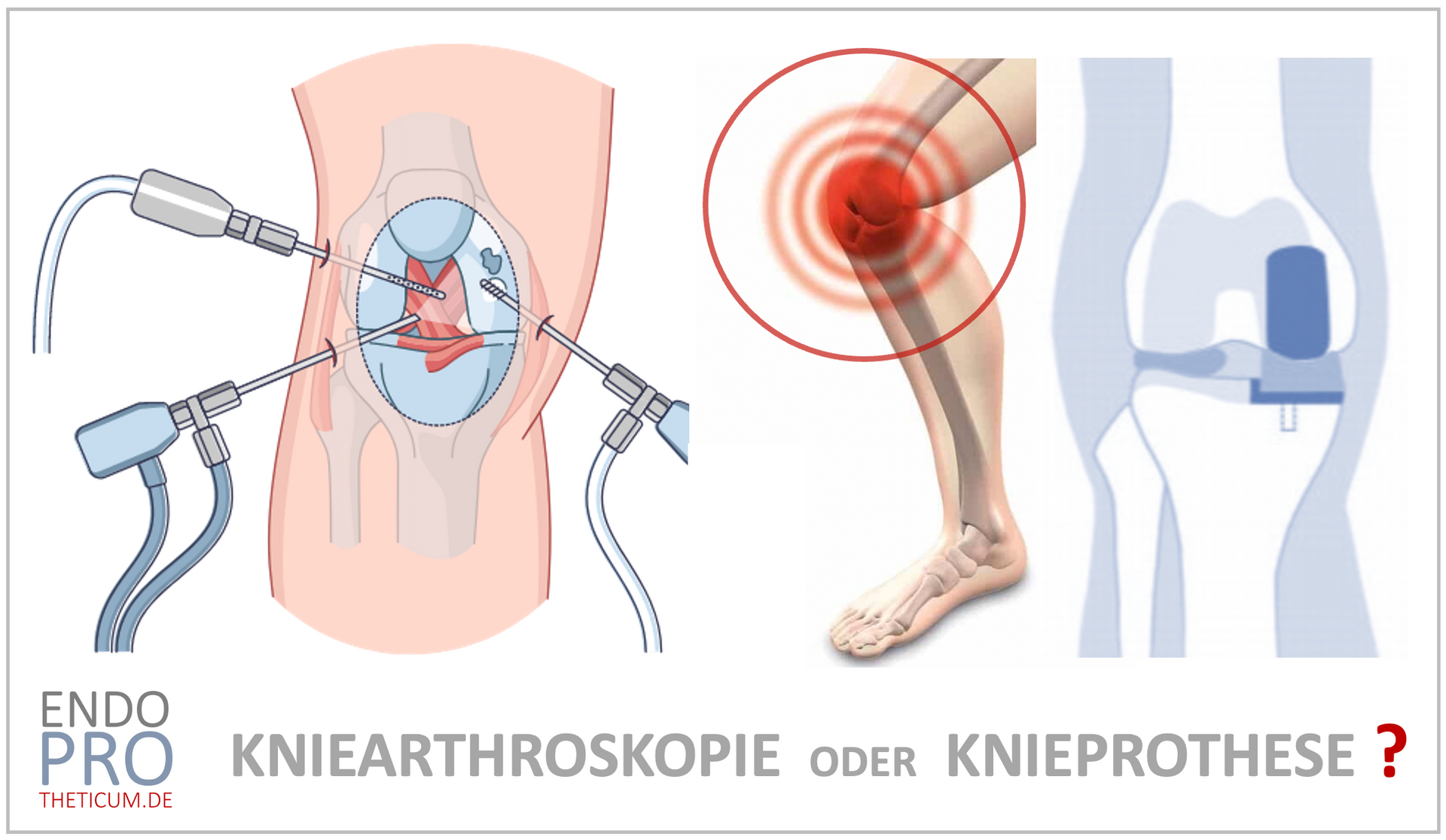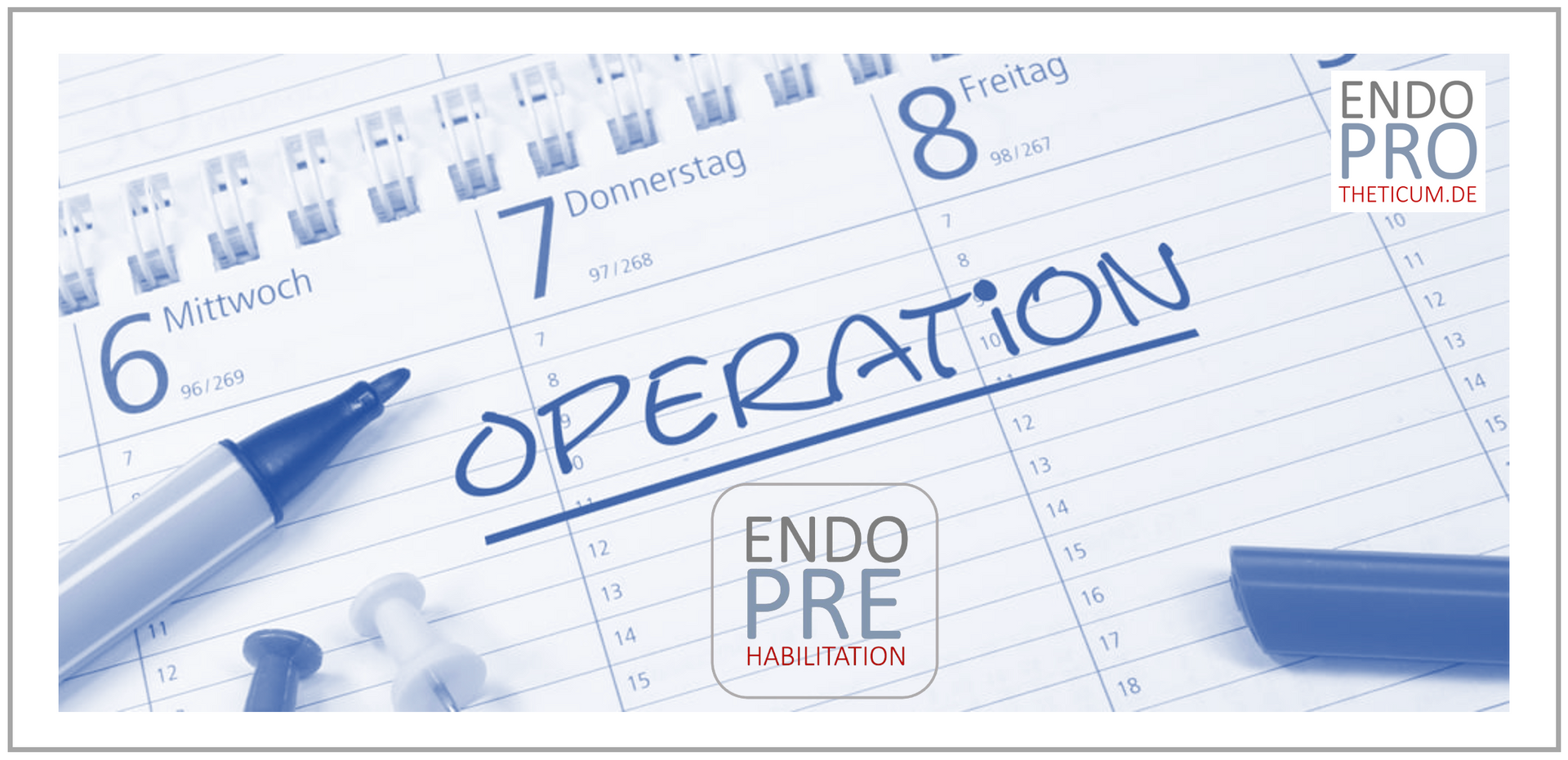Knee arthroscopy or prosthesis-when is the small intervention on the knee still worth?
When does knee arthroscopy still make sense and when should you think about a sled prosthesis or knee prosthesis?

The decision between minimally invasive arthroscopy and the use of a knee prosthesis poses a challenge for many patients and doctors. While arthroscopy is considered a gentle intervention, the knee prosthesis promises a sustainable solution for advanced damage. But when does which method really make sense? In this comprehensive guide, we illuminate the differences between isolated meniscus injuries and degenerative damage caused by arthrosis, offer therapy recommendations for different patient groups and explain why arthroscopy often does not promise no success with existing arthrosis. In addition, we go into detail about the partial joint replacement, such as the sled prosthesis, and show when it represents an effective alternative to arthroscopy or for complete joint replacement.
1. Anatomy and function of the knee joint
In order to better understand the different treatment options, it is first worth taking a look at the anatomy of the knee. The knee is one of the largest and most complex joints in the human body. It consists of:
- Femur (femoral bone)
- Tibia (shinbone)
- Patella (kneecap)
- Menisk - two crescent -shaped cartilage slices that act as a shock absorber
- Bands (cross and side ligaments) for stabilization
- Joint cartilage that enables smooth movements
Damage to one of these components can cause pain, restrictions on movement and instability. Depending on the cause of the symptoms, different therapies are eligible.
Difference between isolated meniscus injuries and degenerative damage caused by arthrosis
The knee joint is one of the most stressed joints of the human body and therefore susceptible to various injuries and degenerative changes.
Isolated meniscus injuries:
The meniscus serves as a shock absorber between the thigh bone and shin. Acute injuries, for example through sports, can lead to cracks. Typical symptoms are sudden pain, swelling and movement restrictions. In such cases, arthroscopy can make sense to repair the crack or remove the damaged part.
Degenerative damage caused by arthrosis:
Osteoarthritis is a chronic, progressive disease in which the articular cartilage is increasingly broken down. Causes can be overload, malposition or genetic factors. Symptoms are pain, stiffness and limited mobility. In contrast to acute injuries, arthrosis develops over the years.
2. Isolated meniscus injuries and degenerative damage: the most important differences
2.1 Isolated meniscus injuries
Isolated meniscus injuries often arise from sports accidents or abrupt movements. The meniscus can tear, which leads to sudden pain, swelling and blockages in the knee. Typical symptoms are:
- Stinging pain, especially when moving
- Feeling that the knee "hooks" or blocked
- Swelling after stress
👉 Therapy option: In younger patients or fresh cracks, an arthroscopic meniscus seam can be useful to maintain the meniscus.
2.2 Degenerative damage caused by osteoarthritis
Osteoarthritis is a creeping, progressive wear and tear of the articular cartilage. Typical symptoms are:
- Starting pain
- Stress pain
- Morning stiffness
- Crunch in the knee
👉 Therapy option: Conservative measures (physiotherapy, pain relievers, hyaluronic acid) can slow the progression. With far advanced osteoarthritis, however, a joint replacement is often essential.
Therapy options: Isolated injuries vs. degenerative damage
Isolated meniscus injuries:
- Acute complaints: In the event of sudden injuries without previous knee problems, arthroscopy can be useful. This minimally invasive intervention enables the function to be restored quickly.
- Young patients: In young, active people, arthroscopic repair is often preferred to maintain the natural joint function.
Degenerative damage caused by arthrosis:
- Chronic complaints: In the case of long -lasting pain and advanced osteoarthritis, conservative measures such as physiotherapy, pain medication and weight reduction are the first choice.
- Older patients: In older people with a significant restriction, a joint replacement, such as the sled prosthesis, can be considered.
3. When does a knee arthroscopy make sense?
The knee arthroscopy was also a common intervention for osteoarthritis. However, studies show that it does not bring long -term benefits in degenerative changes. Today arthroscopy is primarily used at:
- Fresh meniscus tears (va in younger patients)
- Free joint bodies (e.g. cartilage pieces that block the joint)
- Kniegelenkergüssen of unknown cause
👉 with osteoarthritis? No longer recommended! The cartilage damage remains, the symptoms usually return.
Arthroscopy with existing osteoarthritis: why often not targeted?
Studies have shown that arthroscopy does not bring long -term benefits in patients with knee arthrosis. Neither pain nor function of the joint are improved sustainably. Therefore, this intervention is no longer recommended as a standard treatment for existing arthrosis.
Teil joint replacement on the knee: sled prosthesis as an effective solution
With one -sided osteoarthritis, which only affects part of the knee joint, a sled prosthesis can be a gentle alternative to the complete joint replacement. Only the affected joint section is replaced, which leads to faster rehabilitation and a more natural feeling of movement. The prerequisite is that the knee cords are stable and there are no malpositions.
4. Knee prosthesis: full vs. partial joint replacement
With advanced osteoarthritis, the knee prosthesis is a permanent solution. There are two main types:
4.1 Total knee endoprosthesis (knee-tep)
The entire knee joint is replaced. Sensible at:
- Complete cartilage disorder
- Pronounced misalignment (x-/o-leg)
- Pain in several knee sections
👉 Advantage: relief of pain, long -term solution
👉 Disadvantage: longer rehabilitation time, more bone substance must be removed
4.2 Subpromance (sled prosthesis)
A sled prosthesis only replaces the damaged part of the knee - mostly the inside. Requirements:
- Only one -sided osteoarthritis
- Stable ribbons
- No pronounced malpositions
👉 advantage: less bone removal, faster relaxation, natural feeling of movement
👉 Disadvantage: not suitable for advanced osteoarthritis in several knee sections
5. What therapy for whom? A detailed guide
The choice between knee arthroscopy, a partial joint replacement (e.g. sled prosthesis) or a complete knee prosthesis depends on various factors. Here is a detailed consideration:
5.1 Isolated meniscus injuries
Typical patient: younger, sporty active people or middle -aged people with sudden, stress -dependent pain after trauma.
Recommended therapy:
- Knee arthroscopy: In the case of acute, clearly defined meniscal cracks without cartilage damage, minimally invasive arthroscopy can be useful. The crack is sewn (with a favorable location) or the damaged meniscus content (partial resection). It is important to obtain as much meniscus tissue as possible in order to minimize the risk of later osteoarthritis.
- Rehabilitation: After just a few weeks, the sport can be returned, especially with partial resections. In the event of seam, a longer relief should take place.
Forecast: Good for isolated cracks without additional damage. Beware of degenerative changes - arthroscopy is usually not very promising here.
5.2 Degenerative damage and osteoarthritis
Typical patient: older patients (> 50 years), people with long -lasting pain, increasing movement restriction and X -ray findings with cartilage wear.
Recommended therapy:
- Knee arthroscopy: In this case, rarely useful. Studies show that arthrosis usually does not bring long -term improvement in osteoarthritis. It is therefore no longer routinely recommended.
- Partial joint replacement (sled prosthesis): If only a compartment of the knee (usually the inside) is affected, a sled prosthesis can be a good solution. The healthy part of the joint remains, which enables faster rehabilitation and a more natural feeling of movement.
- Knee prosthesis: With advanced osteoarthritis in several compartments, the full knee prosthesis remains as the last option. The entire joint is replaced.
Rehabilitation:
- Small prosthesis: Patients can often go well after a few weeks, many even without walking aids.
- Knee prosthesis: The complete recovery often takes several months, but offers long -term pain relief and improvement in function.
Forecast: Better mobility and pain relief with correct indication. The sled prosthesis in particular offers good long -term results in locally limited osteoarthritis.
5.3 Acute vs. long -lasting complaints
- Acute pain after trauma: Here, a precise diagnosis should first be made (MRI, X -rays). The arthroscopy can help with isolated meniscus tears or free joint bodies.
- Long -lasting complaints: In the case of chronic pain, especially with existing arthrosis, arthroscopy is usually no longer displayed. In these cases, joint -preserving measures such as partial dentures or with advanced arthrosis, the knee prosthesis are more suitable.
5.4 Younger vs. older patients
- Younger patients: The focus here is on the joint maintenance. Arthroscopy for isolated injuries or a joint -preserving sled prosthesis are preferred to delay a later complete prosthesis.
- Older patients: At older age and advanced osteoarthritis, the knee prosthesis offers long -term freedom of pain and better mobility. The sled prosthesis also remains an option if osteoarthritis is only limited to one area.
5.5 Summary: The way to the right therapy decision
The choice of the right treatment depends on many individual factors - age, level of activity, pain intensity and joint state. Isolated arthroscopy is usually no longer useful for degenerative damage. Partial dentures such as the sled prosthesis often offer a gentle alternative with faster rehabilitation and natural feeling of movement. With advanced osteoarthritis, the knee prosthesis remains the reliable option for long -term pain exemption.
An individual consultation with an experienced orthopedic surgeon is essential to select the right therapy and avoid over -therapy.
Conclusion
The choice of the right therapy for knee problems depends on the type of injury or illness, the duration of the symptoms and the age of the patient. While arthroscopy can be useful for isolated meniscus injuries, it often shows no success with existing arthrosis. In such cases, a partial joint replacement, such as the sled prosthesis, can be an effective solution to improve the quality of life of the patients.
Arthroscopy or prosthesis?
Arthroscopy is particularly suitable for acute meniscus injuries - but not with osteoarthritis. In the case of degenerative knee changes, sub -prostheses such as the sled prosthesis offer a good alternative to the complete joint replacement if only a section of the knee is affected.
Thorough diagnostics and individual advice from experienced orthopedic surgeons are crucial to find the best possible treatment.
👉 Question to you: Do you have knee problems and are unsure which therapy is possible for you? Feel free to make an appointment!
MAKE AN APPOINTMENT?
You are welcome to make an appointment either by phone or online .



























